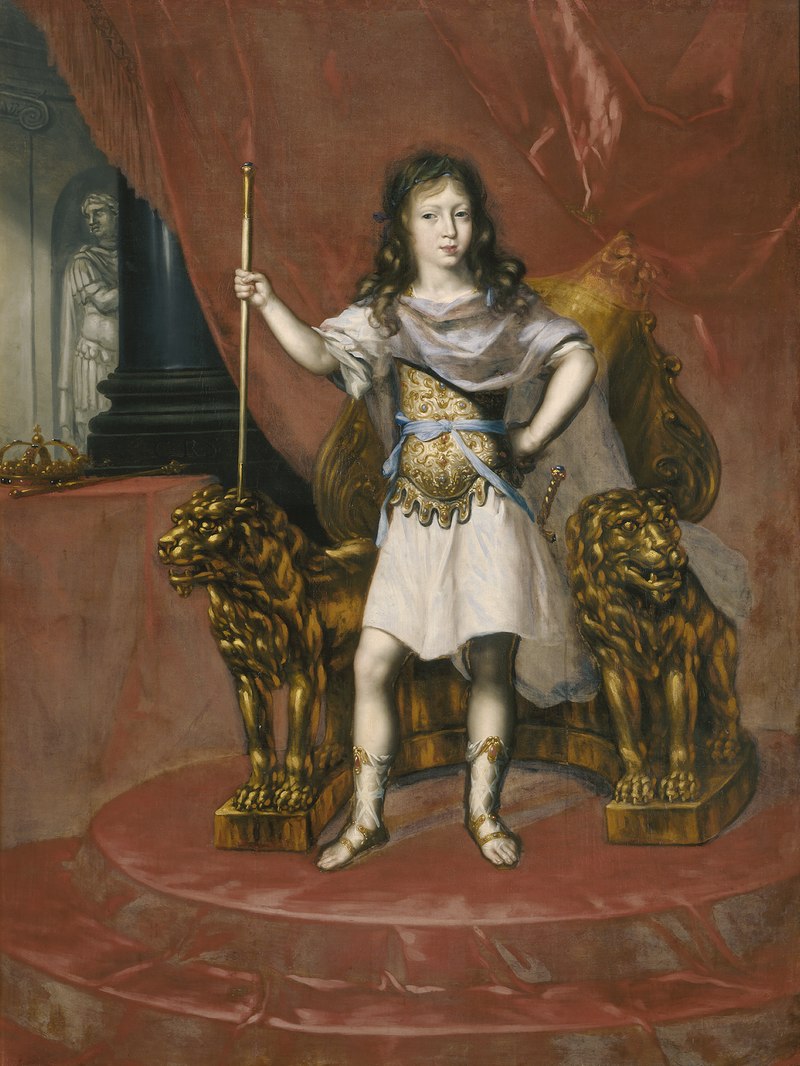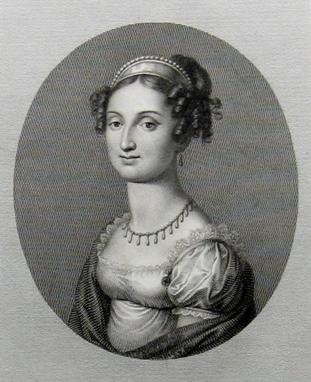by Susan Flantzer
© Unofficial Royalty 2021

Frederik I, King of Sweden; Credit – Wikipedia
Fredrik I was King of Sweden from 1720 until his death in 1751. However, he was also Prince Consort of Sweden from 1718 to 1720 and Landgrave of Hesse-Kassel from 1730 until his death. He was born Prince Friedrich of Hesse-Kassel on April 28, 1676, in Kassel, Landgraviate of Hesse-Kassel, now in the German state of Hesse. Friedrich was the third but the eldest surviving of the twelve sons and the third but the eldest surviving of the seventeen children of Karl I, Landgrave of Hesse-Kassel and Maria Amalia of Courland. His paternal grandparents were Wilhelm VI, Landgrave of Hesse-Kassel and Hedwig Sophia of Brandenburg. His maternal grandparents were Jacob, Duke of Courland to Luise Charlotte of Brandenburg. Both his grandmothers were sisters and so his parents were first cousins.
Friedrich had sixteen siblings:
- Wilhelm of Hesse-Kassel (1674 – 1676), died in early childhood
- Karl of Hesse-Kassel (1675 – 1677), died in early childhood
- Christian of Hesse-Kassel (born and died 1677), died in infancy
- Sophie Charlotte of Hesse-Kassel (1678 – 1749), married Friedrich Wilhelm, Duke of Mecklenburg-Schwerin, no children
- Unnamed son (born and died 1679)
- Karl of Hesse-Kassel (1680 – 1702), unmarried, served in the army, died from tetanus
- Wilhelm VIII, Landgrave of Hesse-Kassel (1682 – 1760), married Dorothea Wilhelmina of Saxe-Zeitz, had three children including Friedrich II, Landgrave of Hesse-Kassel who married Princess Mary of Great Britain, daughter of King George II of Britain
- Leopold of Hesse-Kassel (1684 – 1704), unmarried, died of illness while serving in the army
- Ludwig of Hesse-Kassel (1686 – 1706), unmarried, killed in battle
- Marie Luise of Hesse-Kassel (1688 – 1765), married Johan Willem Friso, Prince of Orange, had two children including Willem IV, Prince of Orange who married Anne, Princess Royal, daughter of King George II of Great Britain. Marie Luise of Hesse-Kassel and her husband Johan Willem Friso, Prince of Orange hold the distinction of being the most recent common ancestors to all currently reigning European monarchs. In addition, they are the ancestors of many former monarchies.
- Maximilian of Hesse-Kassel (1689 – 1753), married Friederike of Hesse-Darmstadt, had eight children
- Unnamed daughter (born and died 1690)
- Georg Karl of Hesse-Kassel (1691 – 1755), unmarried, served in the Prussian and Swedish armies
- Eleonore Antoine of Hesse-Kassel (born and died 1694)
- Wilhelmine Charlotte of Hesse-Kassel (1695 – 1722), unmarried
- Unnamed son (born and died 1696)
After completing his education at the University of Utrecht, Friedrich made the Grand Tour, traveling in the Netherlands, Switzerland, Italy, Denmark, and the German monarchies. He then embarked on a military career, leading the Hessian troops in the War of the Spanish Succession alongside the Dutch and the Holy Roman Empire troops.

Luise Dorothea of Brandenburg, Fredrik’s first wife; Credit – Wikipedia
On May 31, 1700, in Berlin, Electorate of Brandenburg, now in the German state of Brandenburg, Friedrich married his first cousin Luise Dorothea of Brandenburg, the only daughter of the future King in Prussia, Friedrich I, and his first wife Elisabeth Henriette of Hesse-Kassel. Luise Dorothea was sickly and died childless on December 23, 1705, aged 25. After the death of his first wife, Friedrich began to look for a second wife from Europe’s great royal houses. He had bigger ambitions than just being the Landgrave of Hesse-Kassel. He wanted to have influence in a larger monarchy. Friedrich discovered Ulrika Eleonora of Sweden. Her brother Karl XII, King of Sweden was unmarried and Ulrika Eleonora was regarded as a possible future heir to the Swedish throne. In 1708, Ulrika Eleonora’s elder sister Hedwig Sophia died from smallpox, leaving her only child eight-year-old Karl Friedrich as a possible heir to the Swedish throne. At the age of two, Karl Friedrich had become Duke of Schleswig-Holstein-Gottorp upon the death of his father in battle.

Ulrika Eleonora of Sweden, Fredrik’s second wife; Credit – Wikipedia
As early as 1710, Hereditary Prince Friedrich of Hesse-Kassel requested Ulrika Eleonora’s hand in marriage but their betrothal was not announced until January 23, 1714. The marriage was supported by her grandmother Hedwig Eleonora, who expected Ulrika Eleonora to move with her husband to the Landgraviate of Hesse-Kassel, thereby increasing the possibility that the young son of the deceased Hedwig Sophia, Karl Friedrich, Duke of Schleswig-Holstein-Gottorp, would become the heir to the Swedish throne. Ulrika Eleonora and Friedrich of Hesse-Kassel were married on March 24, 1715 in Stockholm, Sweden. Friedrich took the Swedish version of his name, Fredrik, and was granted the title Prince of Sweden and the style of His Royal Highness. Instead of moving to the Landgraviate of Hesse-Kassel, the couple remained in Sweden.
In 1718, Karl XII, King of Sweden invaded Norway by laying siege to Fredriksten Fortress. On December 11, 1718, while in the trenches close to the perimeter of Fredriksten Fortress, 36-year-old Karl XII was hit in the head by a projectile that entered the left side of his skull and exited on the right side of his skull, instantly killing him. Some historians claim Karl XII was assassinated instead of being hit by enemy fire, and that his brother-in-law Fredrik could have hired an assassin to kill Karl XII.
After Karl XII’s death, his only surviving sibling Ulrika Eleonora claimed the Swedish throne even though her nephew Karl Friedrich, Duke of Schleswig-Holstein-Gottorp had the better claim by primogeniture. Ulrika Eleonora asserted that she was the closest surviving relative of her brother and was elected Queen of Sweden by the Riksdag, the Swedish legislature. She was crowned at Uppsala Cathedral on March 17, 1719.

Frederik I, King of Sweden in his coronation robes; Credit – Wikipedia
Ulrika Eleonora wanted to reign jointly with her husband Prince Fredrik as William III and Mary II had done in England but the Swedish nobility rejected the notion. Frederik increased his influence on his wife and in state affairs and then reached out to the most powerful men in Sweden who soon considered a change. Ulrika Eleonora wrote a letter to the Riksdag on February 29, 1720, informing its members of her desire to abdicate in favor of her husband on the condition that she should succeed him if he should die before her. The Riksdag confirmed the succession of Ulrika Eleonora’s husband and the condition of her abdication which granted her place as the heir to the Swedish throne until her death. On March 24, 1720, Prince Fredrik acceded to the Swedish throne as Fredrik I, King of Sweden and Ulrika Eleonora became Queen Consort. In 1730, Frederik’s father died and he became Landgrave of Hesse-Kassel but immediately appointed his younger brother Wilhelm Regent of Hesse-Kassel. The childless Frederik would be succeeded as Landgrave of Hesse-Kassel by his brother who would reign as Wilhelm VIII, Landgrave of Hesse-Kassel.
At the beginning of his 31-year-reign, Fredrik was an active monarch. However, after the nobility had regained some power during the wars with Russia, Fredrik was not so much powerless as uninterested in the affairs of state. The battle losses in the Great Northern War suffered by Frederik’s brother-in-law Karl XII, King of Sweden ended Sweden’s position as a major European power. Under Frederik’s reign, this had to be accepted. Sweden also had to cede land to Russia in the 1721 Treaty of Nystad. In 1723, Fredrik tried unsuccessfully to strengthen his royal authority but failed and thereafter, he never had much to do with politics. Fredrik did not even sign official documents, instead, a stamp of his signature was used. He devoted most of his time to hunting and his affairs. One lasting accomplishment was the institution of the three principal Swedish orders of chivalry: the Royal Order of the Seraphim, the Royal Order of the Sword, and the Royal Order of the Polar Star.

Frederik’s mistress Hedwig Taube; Credit – Wikipedia
In 1734, Swedish noblewoman Hedwig Taube (1714 – 1744) became Fredrik’s official mistress. She was given the title Countess of Hessenstein and bore Fredrik four children. Ulrika Eleonora expressed her disapproval to her close confidant Emerentia von Düben who convinced her never to display any public reaction to the affair because it would be beneath the queen’s dignity. Hedwig Taube died a week after the birth of her daughter Hedwig Amalia. She was originally buried at Vadsbro Church. At a later date, her son Karl Edvard had his mother’s remains transferred to Strängnäs Cathedral where she was interred next to her daughter Hedwig Amalia. After Hedwig Taube’s death, Fredrik took another official mistress, Swedish noblewoman Catharina Ebba Horn, who was given gave the title Countess. Catharina was Fredrik’s mistress for only three years, agreeing to leave her position after having received a great fortune and three estates.

Frederik’s sons by Hedwig Taube; Credit – Wikipedia
While both of his marriages were childless, Fredrik had four children with Hedwig Taube:
- Fredrika Vilhelmina von Hessenstein (1732 – 1734), died in early childhood
- Fredrik Vilhelm von Hessenstein (1735 – 1808), unmarried, had a career in the Swedish army
- Karl Edvard von Hessenstein (1737 – 1769), unmarried, had a career in the Swedish army
- Hedwig Amalia von Hessenstein (1744 – 1752), died in childhood
On November 24, 1741, at Wrangel Palace in Riddarholmen, Stockholm, Sweden, Ulrika Eleonora died from smallpox at the age of 53. She was buried at Riddarholmen Church in Stockholm, Sweden. Because Fredrik and Ulrika Eleonora had no children, Fredrik had no heir. This situation was eventually solved by Elizabeth, Empress of All Russia.
After the death of his first cousin Karl Friedrich, Duke of Holstein-Gottorp in 1739, Prince Adolf Friedrich of Holstein-Gottorp became the administrator of the duchy for his cousin’s 11-year-old son Karl Peter Ulrich. Karl Peter Ulrich’s mother was the deceased Grand Duchess Anna Petrovna of Russia, the elder surviving daughter of Peter I (the Great), Emperor of All Russia. When his mother’s sister Elizabeth succeeded as Empress of Russia, she named her nephew Karl Peter Ulrich as her successor. Now called Peter, he married Adolf Friedrich’s niece Princess Sophie Friederike Auguste von Anhalt-Zerbst. Later, he reigned briefly as Peter III, Emperor of All Russia until he was deposed by his wife who reigned as Catherine II (the Great), Empress of All Russia.
In 1743, after the Russo-Swedish War (1741-1743) which ended in Sweden’s defeat, negotiations were held with Elizabeth, Empress of All Russia. She agreed to restore part of Finland to Sweden if her heir’s uncle, Adolf Friedrich of Holstein-Gottorp, was made heir to the childless King Fredrik I of Sweden. Thereafter, Adolf Friedrich was known by the Swedish version of his name, Adolf Fredrik.

Sarcophagus of Ulrika Eleonora, Queen of Sweden and her husband Fredrik I, King of Sweden; Photo © Susan Flantzer
Fredrik I, King of Sweden survived his wife by ten years. After suffering several strokes, he died on March 25, 1751, aged 74, at Wrangel Palace in Riddarholmen, Stockholm, Sweden, and Adolf Frederik of Holstein-Gottorp succeeded to the Swedish throne. Fredrik was buried with his wife at Riddarholmen Church.
This article is the intellectual property of Unofficial Royalty and is NOT TO BE COPIED, EDITED, OR POSTED IN ANY FORM ON ANOTHER WEBSITE under any circumstances. It is permissible to use a link that directs to Unofficial Royalty.
Works Cited
- De.wikipedia.org. 2021. Friedrich (Schweden) – Wikipedia. [online] Available at: <https://de.wikipedia.org/wiki/Friedrich_(Schweden)> [Accessed 15 September 2021].
- En.wikipedia.org. 2021. Frederick I of Sweden – Wikipedia. [online] Available at: <https://en.wikipedia.org/wiki/Frederick_I_of_Sweden> [Accessed 15 September 2021].
- En.wikipedia.org. 2021. Charles I, Landgrave of Hesse-Kassel – Wikipedia. [online] Available at: <https://en.wikipedia.org/wiki/Charles_I,_Landgrave_of_Hesse-Kassel> [Accessed 15 September 2021].
- Flantzer, Susan, 2021. Ulrika Eleonora, Queen of Sweden. [online] Unofficial Royalty. Available at: <https://www.unofficialroyalty.com/ulrika-eleanora-queen-of-sweden/> [Accessed 15 September 2021].
- Sv.wikipedia.org. 2021. Fredrik I – Wikipedia. [online] Available at: <https://sv.wikipedia.org/wiki/Fredrik_I> [Accessed 15 September 2021].

































